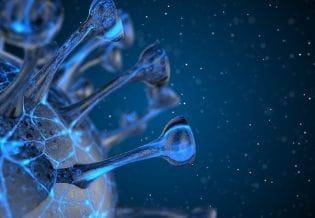Aims & Scope
The Journal of Advances in Nanotechnology (JAN) publishes fundamental and applied research on nanomaterial synthesis, characterization, properties, and non-clinical applications across physics, chemistry, materials science, and engineering disciplines.
Core Research Domains
Nanomaterial Synthesis & Chemistry
- Bottom-up and top-down synthesis methodologies
- Chemical vapor deposition and physical vapor deposition
- Sol-gel processes and hydrothermal synthesis
- Self-assembly and molecular engineering
- Surface functionalization and chemical modification
- Nanoparticle, nanowire, and nanotube fabrication
Novel synthesis route for monodisperse gold nanoparticles with controlled size distribution using green chemistry approaches, including spectroscopic characterization and stability analysis.
Nanocharacterization & Microscopy
- Scanning probe microscopy (AFM, STM)
- Electron microscopy (TEM, SEM, STEM)
- X-ray diffraction and crystallography
- Spectroscopic techniques (Raman, FTIR, XPS)
- Super-resolution optical microscopy
- Nanoscale mechanical and thermal property measurement
Development of advanced AFM imaging protocol for mapping mechanical properties of 2D materials at sub-nanometer resolution, with validation on graphene and MoS2 samples.
Nanoelectronics & Quantum Devices
- Nanoscale transistors and logic devices
- Quantum dots and quantum information processing
- Molecular electronics and single-electron devices
- Nanophotonics and plasmonic structures
- Spintronics and magnetoelectronics
- Flexible and transparent nanoelectronics
Fabrication and electrical characterization of carbon nanotube field-effect transistors with sub-10nm channel length, including transport measurements and device modeling.
Advanced Nanomaterials & Composites
- 2D materials (graphene, TMDs, MXenes)
- Carbon-based nanomaterials (CNTs, fullerenes, graphene)
- Nanocomposites and hybrid materials
- Quantum dots and nanocrystals
- Ceramic and metallic nanostructures
- Thin films and multilayer heterostructures
Synthesis and optoelectronic characterization of transition metal dichalcogenide heterostructures, investigating interlayer coupling effects and charge transfer dynamics using time-resolved spectroscopy.
Secondary Focus Areas
Computational Nanotechnology
- Molecular dynamics simulations
- Density functional theory calculations
- Machine learning for materials discovery
- Multiscale modeling approaches
Nanofabrication Techniques
- Nanolithography (EBL, NIL, photolithography)
- Focused ion beam processing
- Atomic layer deposition
- Nanoimprint and soft lithography
Nanosensors & Detection
- Chemical and gas nanosensors
- Optical and plasmonic sensors
- Biosensor platforms (non-clinical)
- Environmental monitoring devices
Energy Nanomaterials
- Photovoltaic materials and devices
- Battery electrode nanomaterials
- Supercapacitor materials
- Catalytic nanostructures
Nanomechanics & NEMS
- Nanoelectromechanical systems
- Nanoscale actuators and resonators
- Mechanical properties at nanoscale
- Piezoelectric nanomaterials
Environmental Nanotechnology
- Nanomaterial environmental fate
- Nanotoxicology (materials perspective)
- Water purification nanomaterials
- Sustainable synthesis methods
Emerging & Frontier Topics
Article Types & Editorial Priorities
Expedited Review (3-4 weeks)
- Original Research Articles (full-length)
- Systematic Reviews & Meta-Analyses
- Methods & Protocols (novel techniques)
- Materials Characterization Reports
Regular Review (5-6 weeks)
- Short Communications
- Data Notes & Datasets
- Perspectives & Mini-Reviews
- Technical Notes
Extended Review (7-8 weeks)
- Opinion Pieces (by invitation)
- Commentaries on published work
- Educational Reviews
- Historical Perspectives
Editorial Standards & Requirements
All submissions must adhere to established reporting guidelines and ethical standards. We require transparent methodology, reproducible protocols, and comprehensive data availability statements.
Reporting Guidelines
Follow MIRIBEL (Minimum Information Reporting in Bio-Nano Experimental Literature) for nanomaterial characterization. Include synthesis protocols, characterization methods, and raw data.
Data Availability
Deposit raw datasets in recognized repositories (Zenodo, Figshare, Materials Cloud). Provide DOIs for all supporting data. Code and simulation parameters must be shared.
Materials Characterization
Minimum characterization requirements: size distribution, morphology (microscopy), composition (spectroscopy), and purity assessment. Crystal structure for crystalline materials.
Ethical Compliance
Institutional approval required for any biological materials. Environmental safety assessments for novel nanomaterials. Conflict of interest disclosure mandatory.
Reproducibility Standards
Detailed experimental protocols with equipment specifications, reagent sources, and procedural parameters. Statistical methods clearly described with sample size justification.
Preprint Policy
Preprints on arXiv, ChemRxiv, or other recognized servers are welcomed. Does not affect consideration. Must be disclosed at submission.


